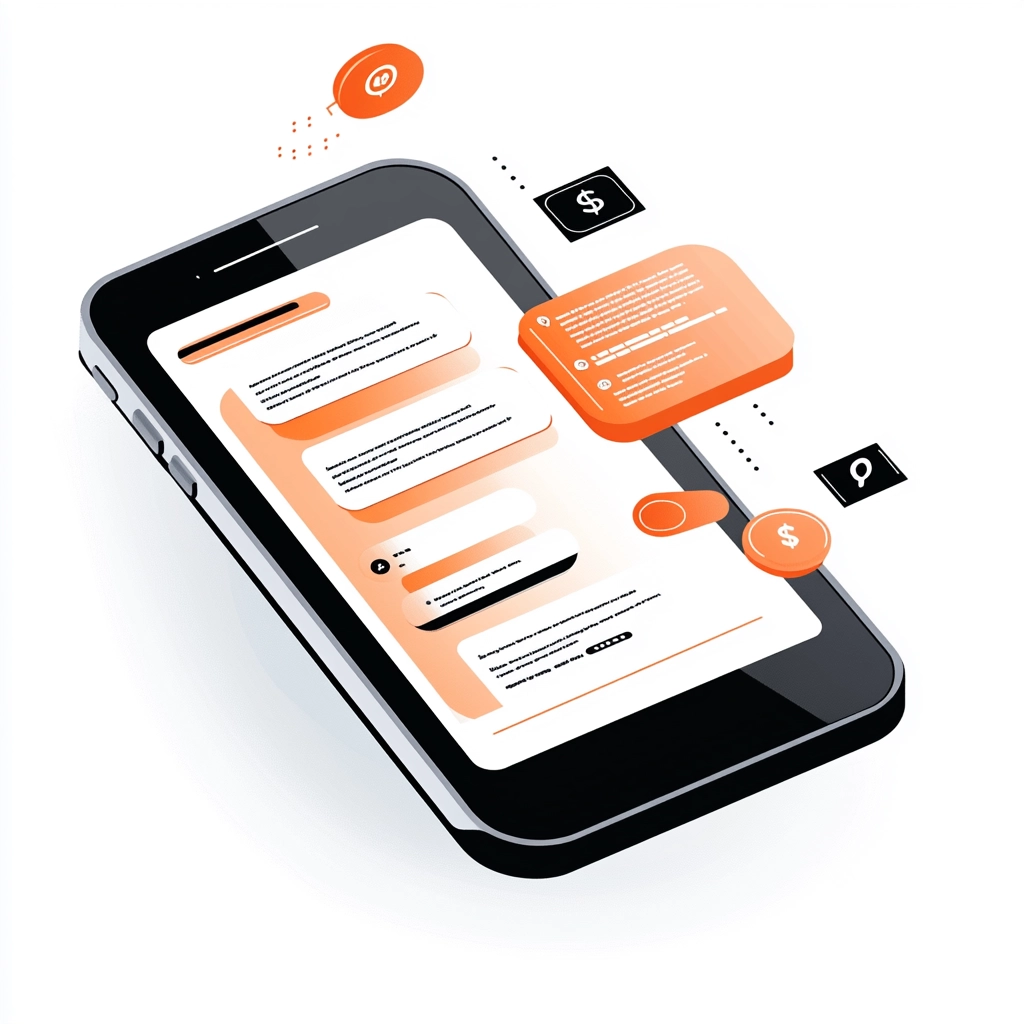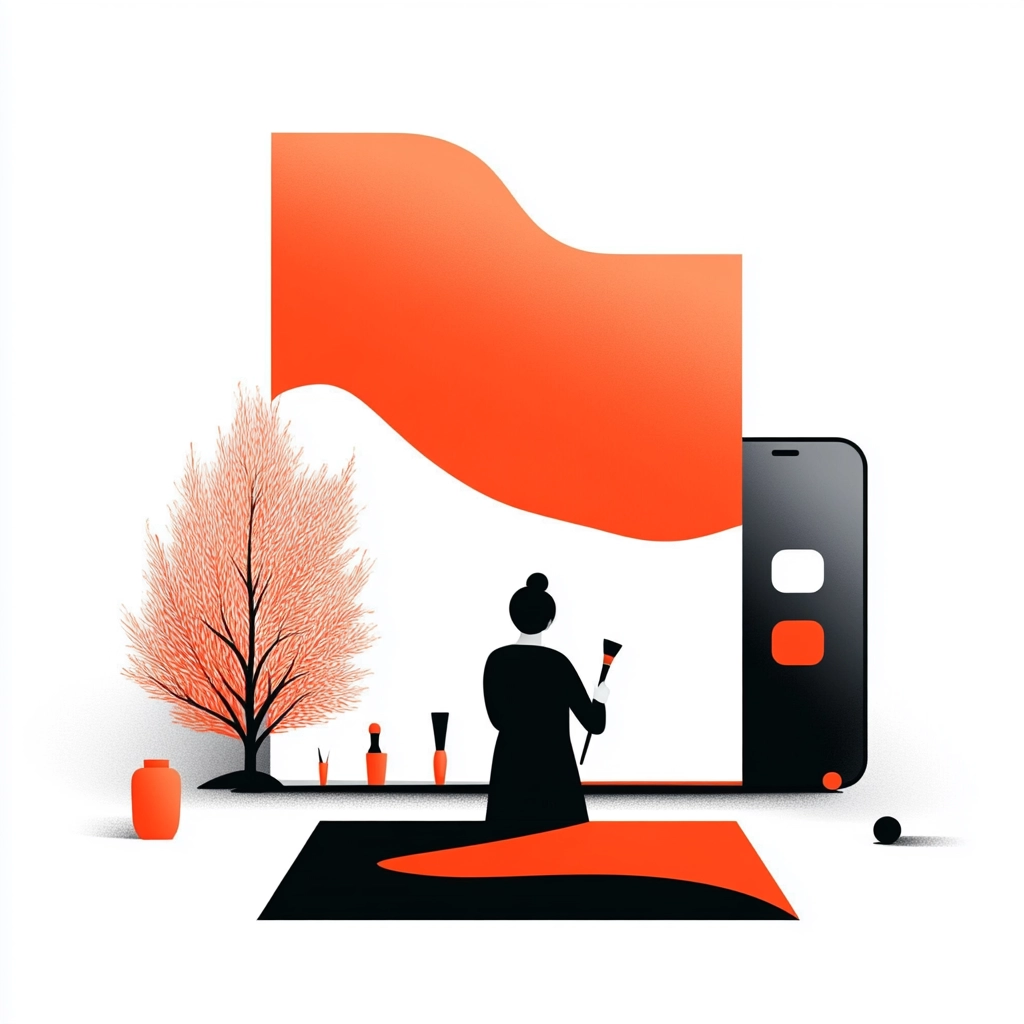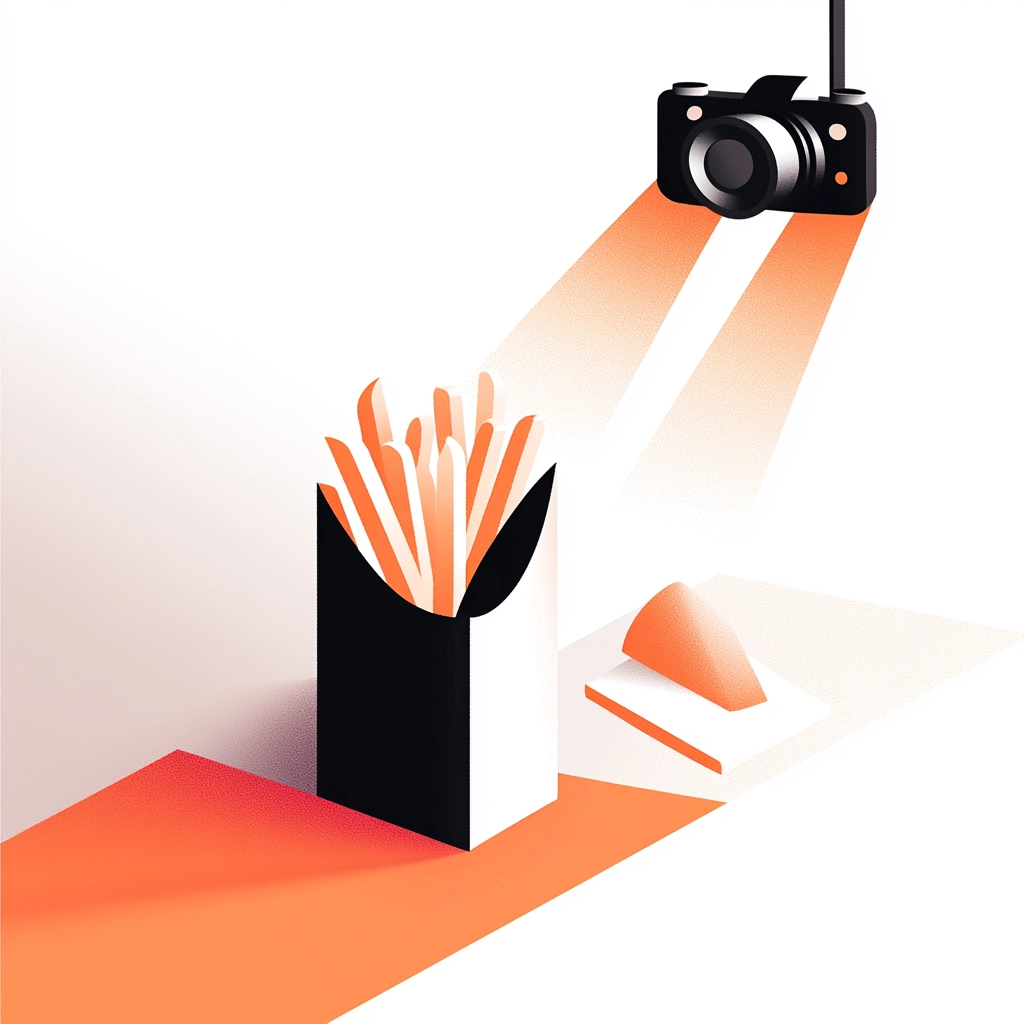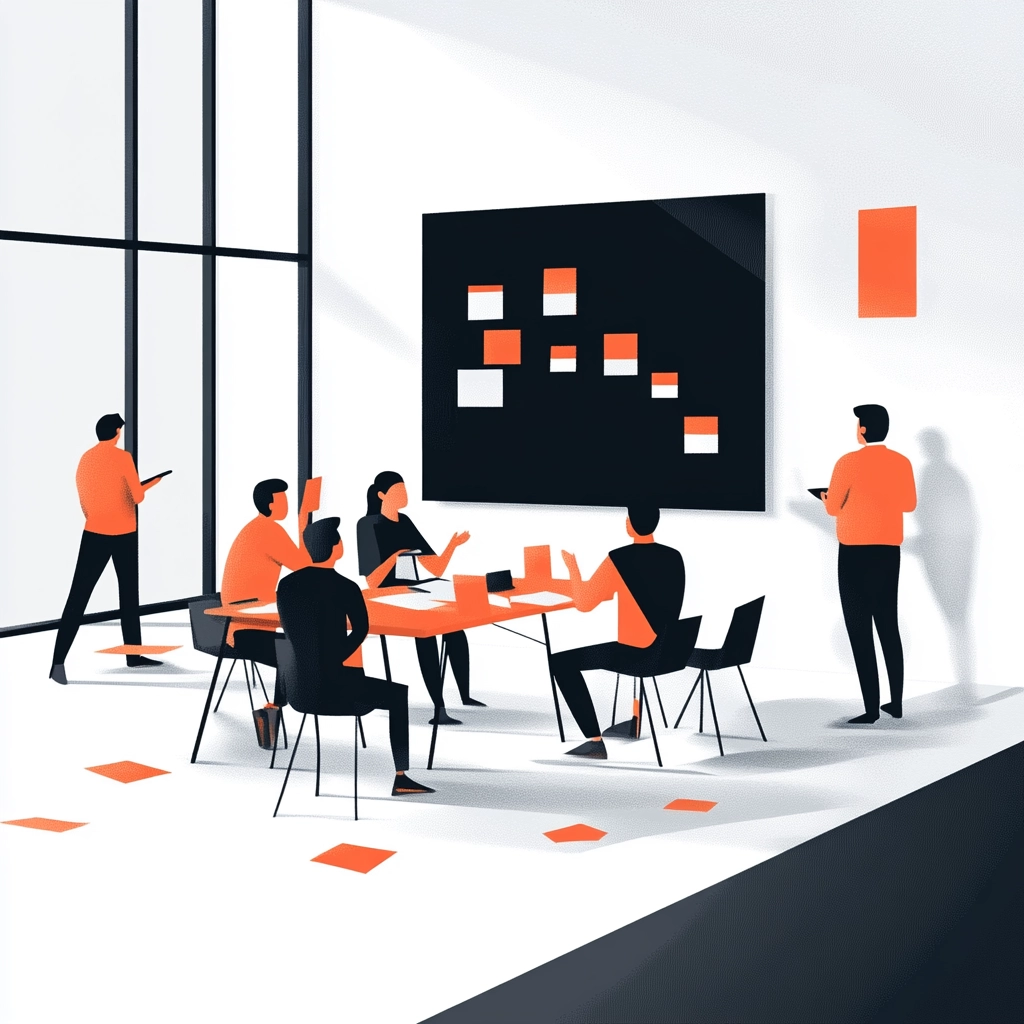PROBLEM
Emotional support feels complex.
Many people struggle to understand, identify, and express their emotion, and often lack accessible tools to support them. This can lead to stress, disengagement, and burnout. Too much information can overwhelm rather than support emotional growth. I saw this clearly while mentoring 15+ women in an emotional intelligence program. That experience shaped my belief that emotional growth needs small actions not complexity.
MY ROLE: Product Designer - (150-hour Product Design Specialization)
- Explored how digital products can support emotional intelligence—helping users better understand, manage, and express their emotions and executed design decisions.
- Led the end-to-end product conceptualization, UX research, and design—from defining the problem to wireframing and prioritizing a functional backlog.
GOALS
- Design a mobile concept to support emotional awareness and expression.
- Develop wireframes and flows based on emotional design principles.
- Define and prioritize a product backlog tied to usability and emotional value.
OUTCOME
- Best Project Award in a class of +10 people from around the world 🥇 Case study in Spanish published by TorresBurriel with a Best Project Award
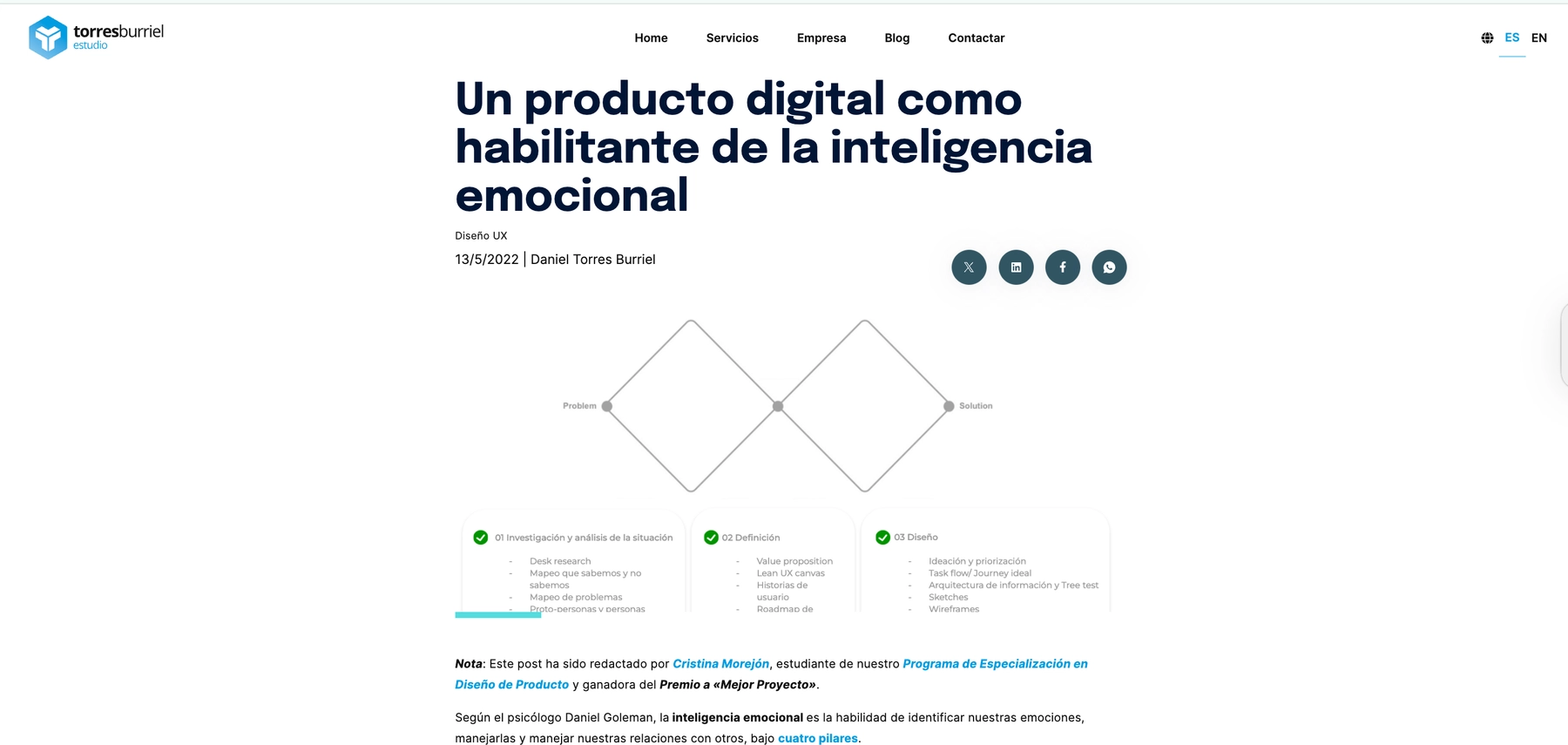
- Conceptualization of the digital product "Emotional"

- Product Backlog
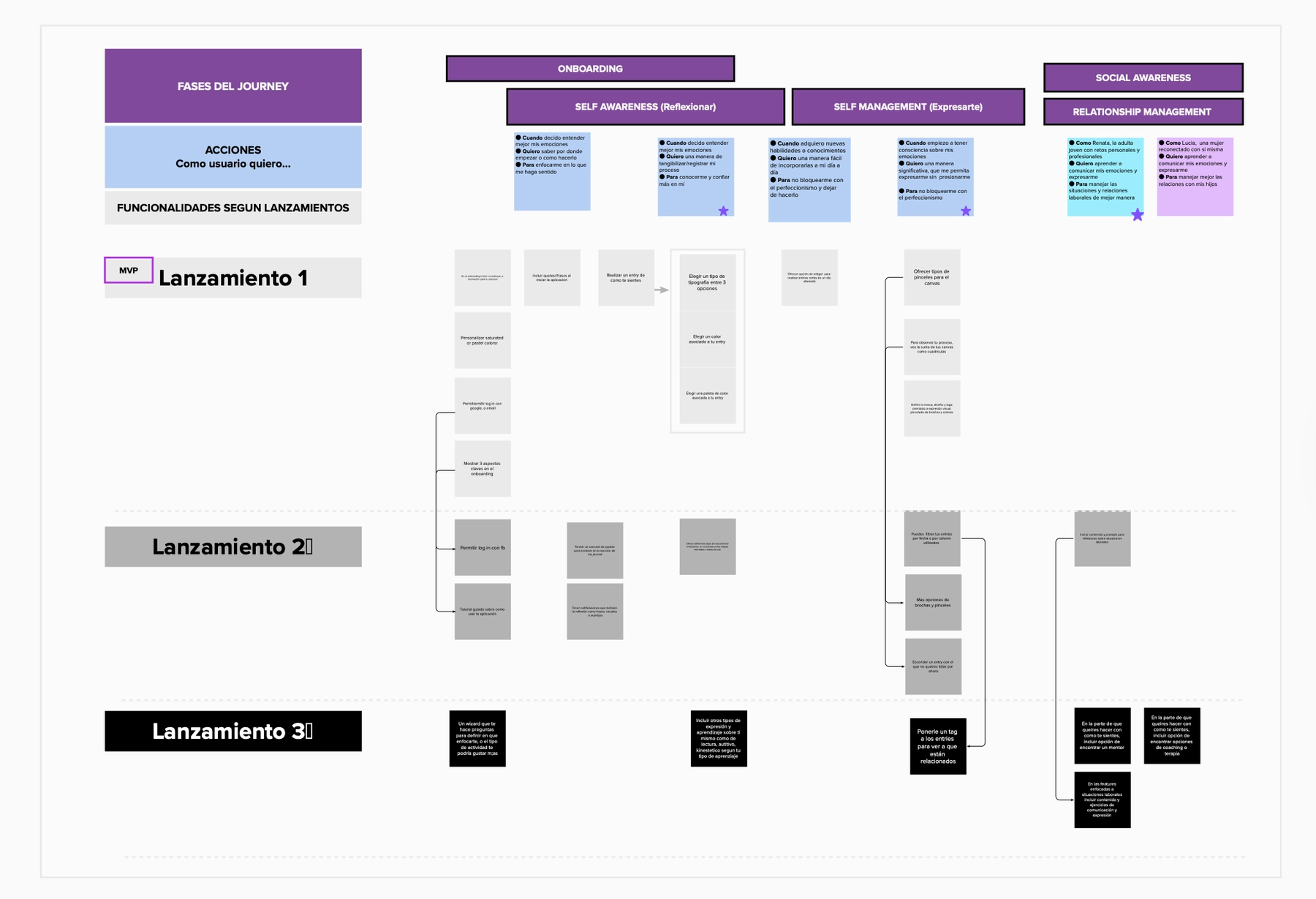
PROCESS
- RESEARCH
- DESIGN
- EXECUTION
1. RESEARCH:
- Defined hypothesis, user needs and pains through 3 expert interviews, digital ethnography and observation creating 2 proto-personas.
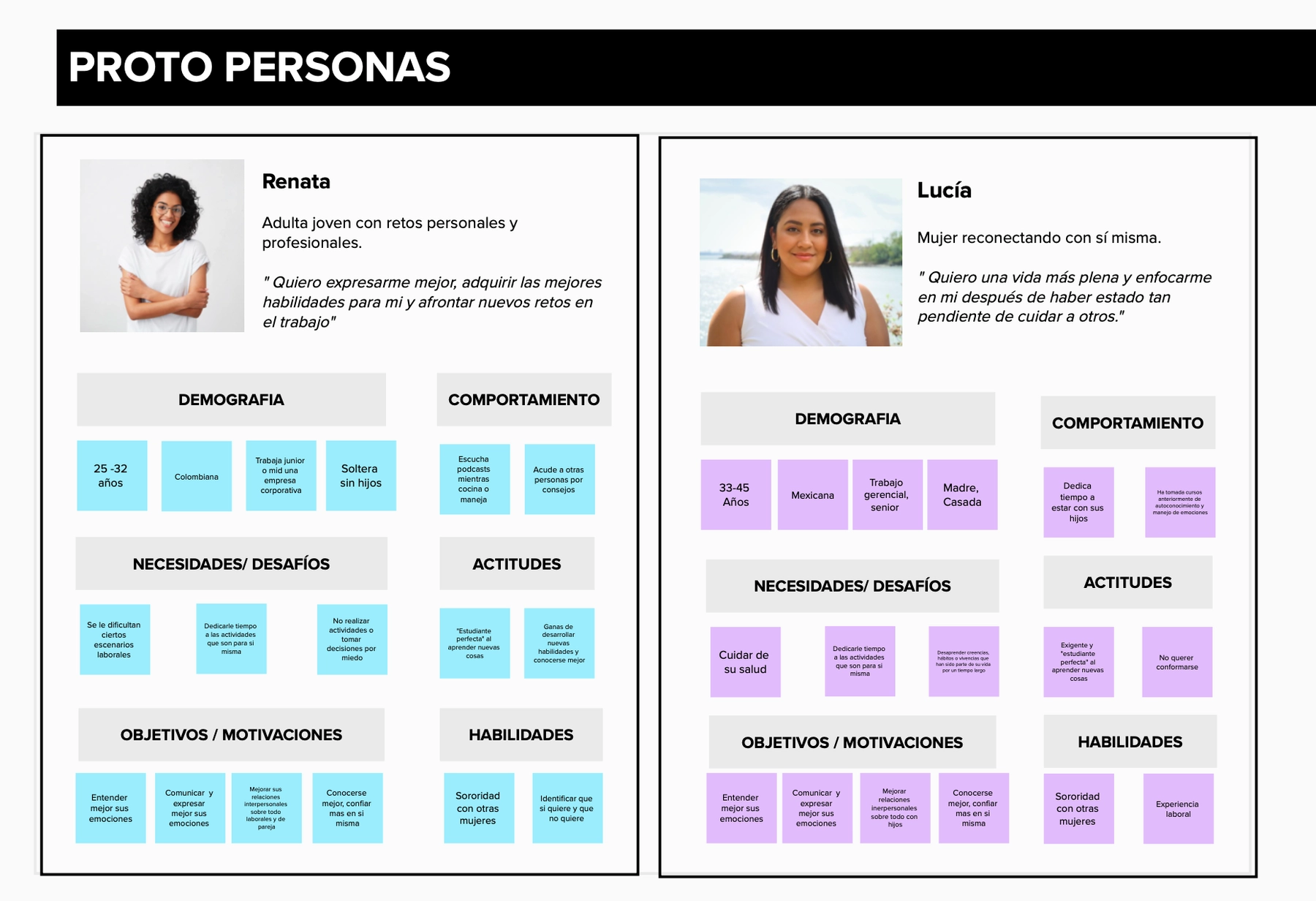
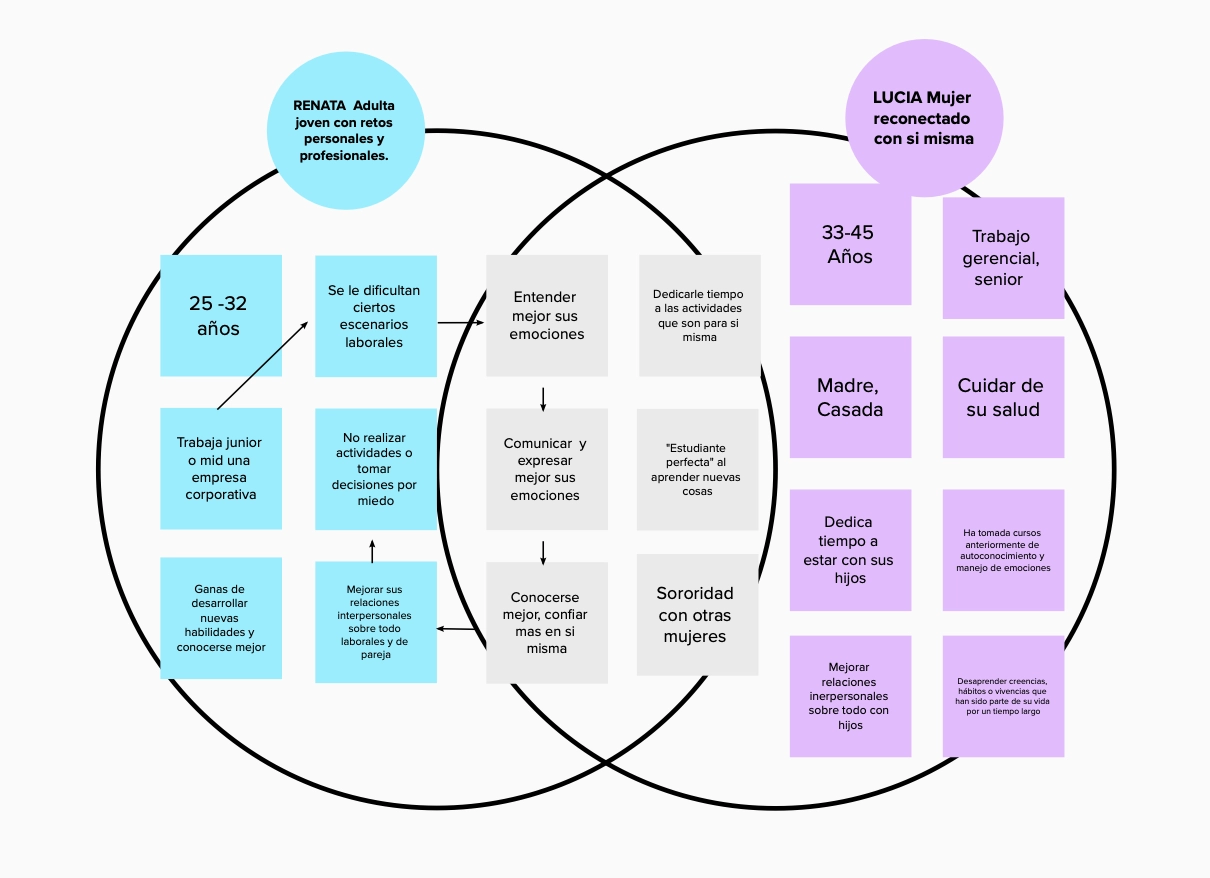
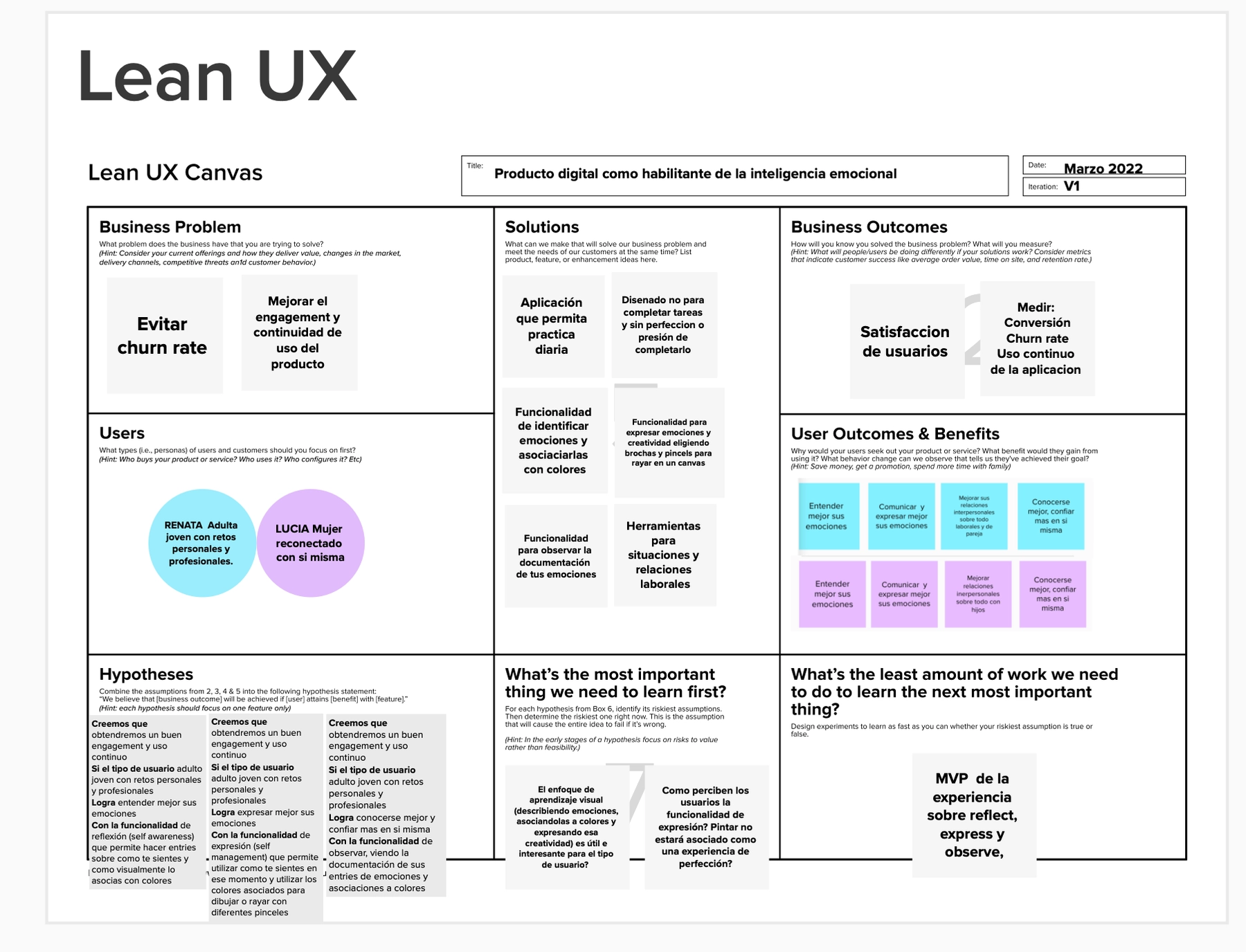
💡 Who? What is the need?
Renata: Young working adult.
Lucia: Mother reconnecting and prioritizing herself.
- Investigated the market to craft a benchmark around mobile apps that relate to emotional intelligence. The most important part was to figure the pillars of emotional intelligence it hits and the core value proposition.
| Emotional Intelligence | Paradym | Moodflow | ThinkYou | Reflectly | Headspace | |
|---|---|---|---|---|---|---|
| Description | Lead, manage and control emotions | Emotional health + wellbeing | Mood & Symptom tracker with journal | Happy guide, gratitude and goals | Journaling app, mood tracker | Mindfulness and meditation app |
| Concept related to emotional intelligence | 4 pillars of EI. Theory | 4 pillars of EI. Theory, reflecting and community | Self awareness pillar: Emotion tracking | Self awareness pillar: Reflect | Self awareness pillar: Reflect | 4 pillars of EI. Theory. Mindfulness with emphasis on self-management |
| Price | Free trial. Anual $47.99 | Free trial. Anual $55.99 | Free trial. 6 monts $13.49 | Free trial. Anual $23.99 | Free trial. Anual $59.99 | Some free. Anual $94.99 |
| Has a log in | Yes | Yes | No | No | Yes | Yes |
| Onboarding Steps | 5 | 5 | 6 | 5 | 8 | 8 |
| Core value prop | Sense of control with theory | Sense of guidance and direction | Visualizing progress and sense of ticking of what's done | Acknowledging, and knowing oneself bette rby documenting it | Visualizing progress | Sense of peace and cheering |
- Key findings
- There’s plenty of mobile apps focused on actions that can help the pillars of emotional intelligence.
- Most focus on self awareness on tracking and reflecting. What about other ways of expression?
- The gap is in making them a habit or enough to not get overwhelmed in perfectionism because they include progress features.
- Funny enough, perfectionism and drowning in theory is what blocks people to continue.
2. DESIGN
- Applied ideation techniques and evaluate them in a value/effort matrix.
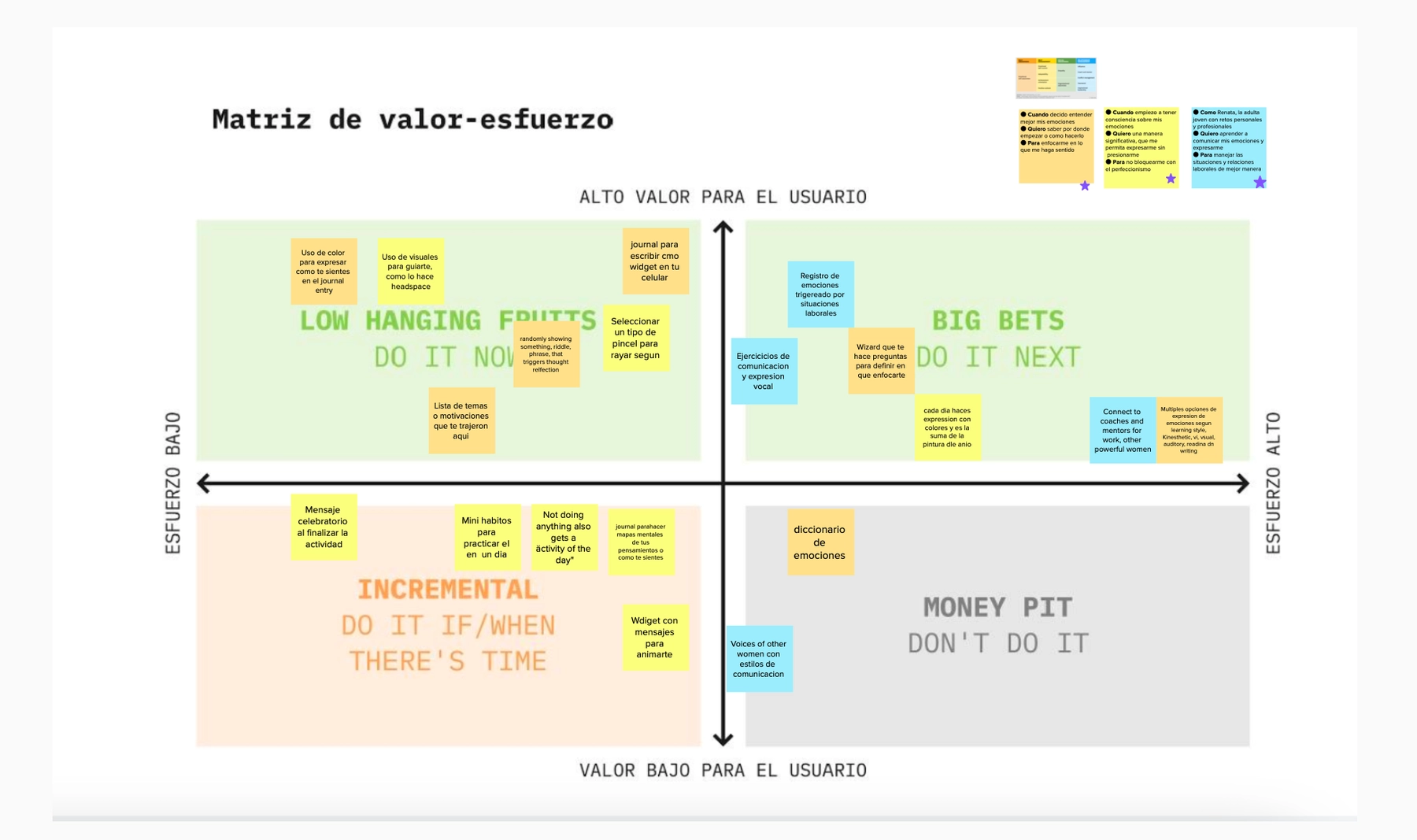
- Created task flows and consolidated the user journey abse don the two proto-personas
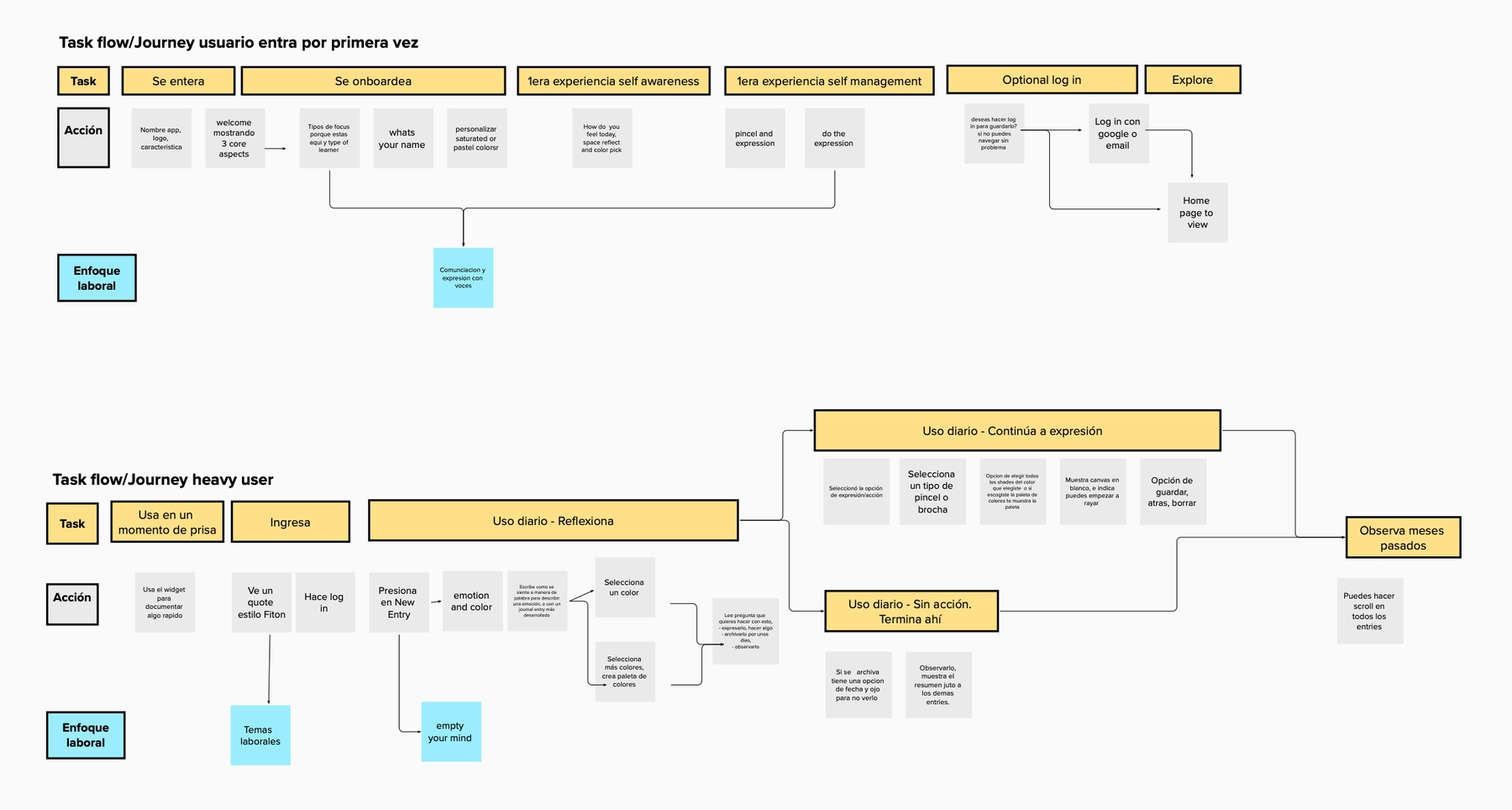
💡 What is the focus?
First time user. Onboarding flow and learning about the first steps of self awareness.
Heavy user. Journal entries as a habit. Can look back at other entries.
- Drafted initial information architecture for a profile, a history, and a journal with multiple expression mechanisms.
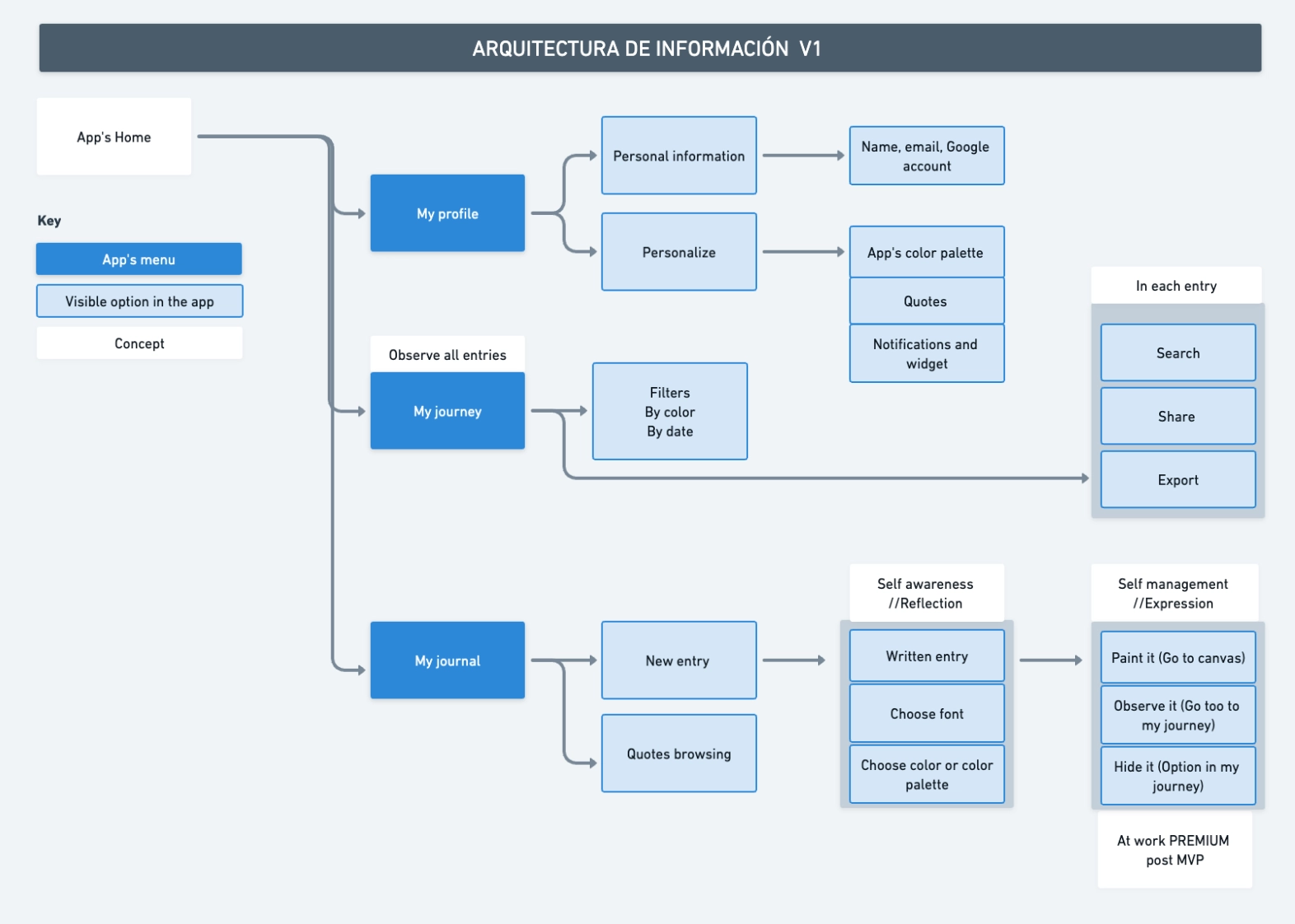
- Sketched with pen and paper low-fidelity wireframes.
- Developed mid-fidelity wireframes with structured journaling prompts, visual feedback and the painting expression section.
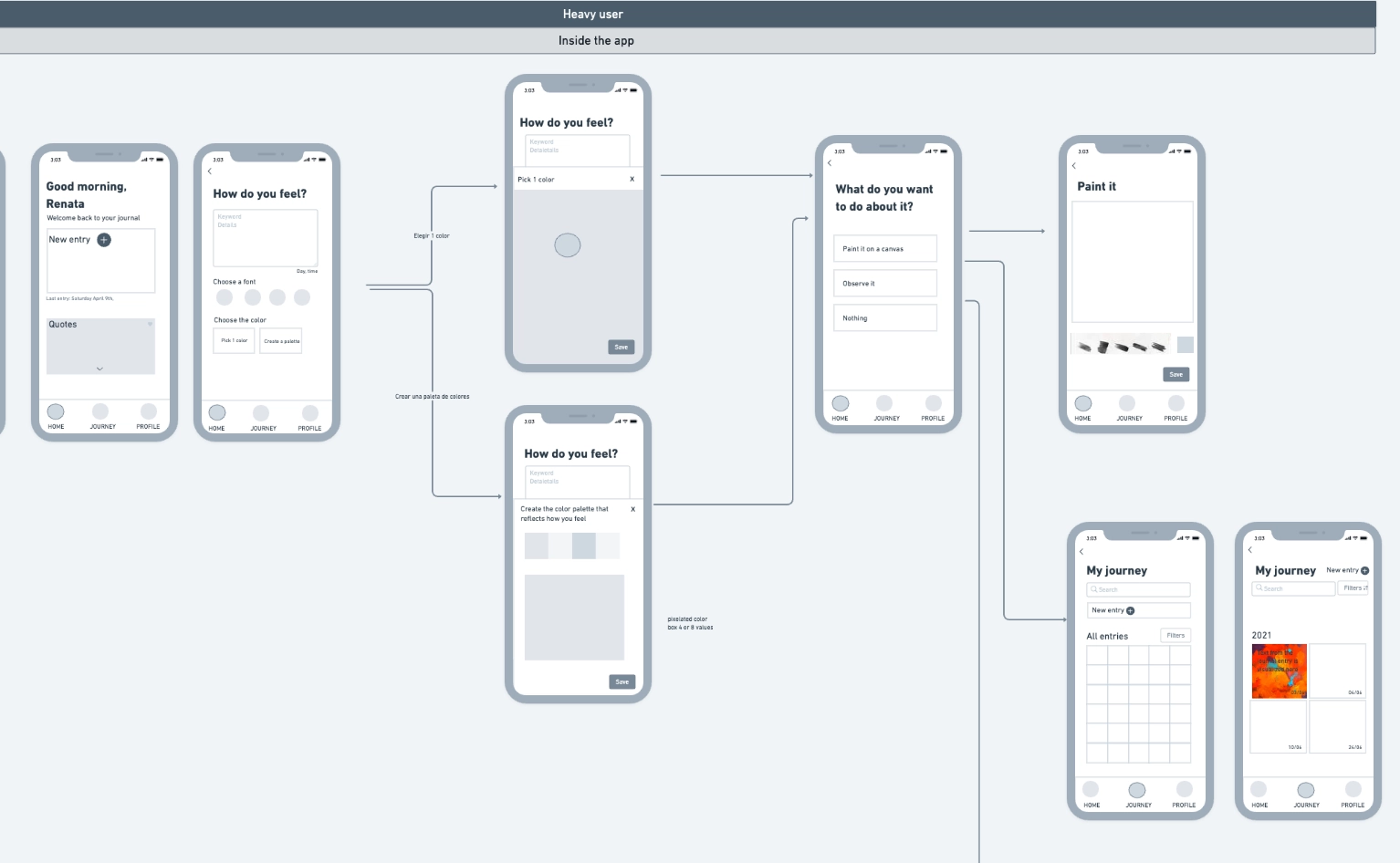
💡 What’s the concept?
A mobile app that walks you to the emotional intelligence journey one step at a time. No pressure, no productivity, just expression.
It allows the user to make journal entries with different ways of expression like painting, associations with color palettes or writing.
It supports multiple art tools and ways of approaching art.
The journey keeps the entries not from a tracking standpoint but rather for observing the emotions and going back to situations that the person is learning how to handle.
3. EXECUTION
Backlog and roadmap
- Proposed roadmap stages tied to concepts of emotional intelligence from basic ones (onseself) to more complex ones (relationship management)
- Created a prioritized feature backlog with 3 launches: journey entries, emotion library, and ways of expressing oneself.
- Categorized items by reflecting on their emotional design value and feasibility.
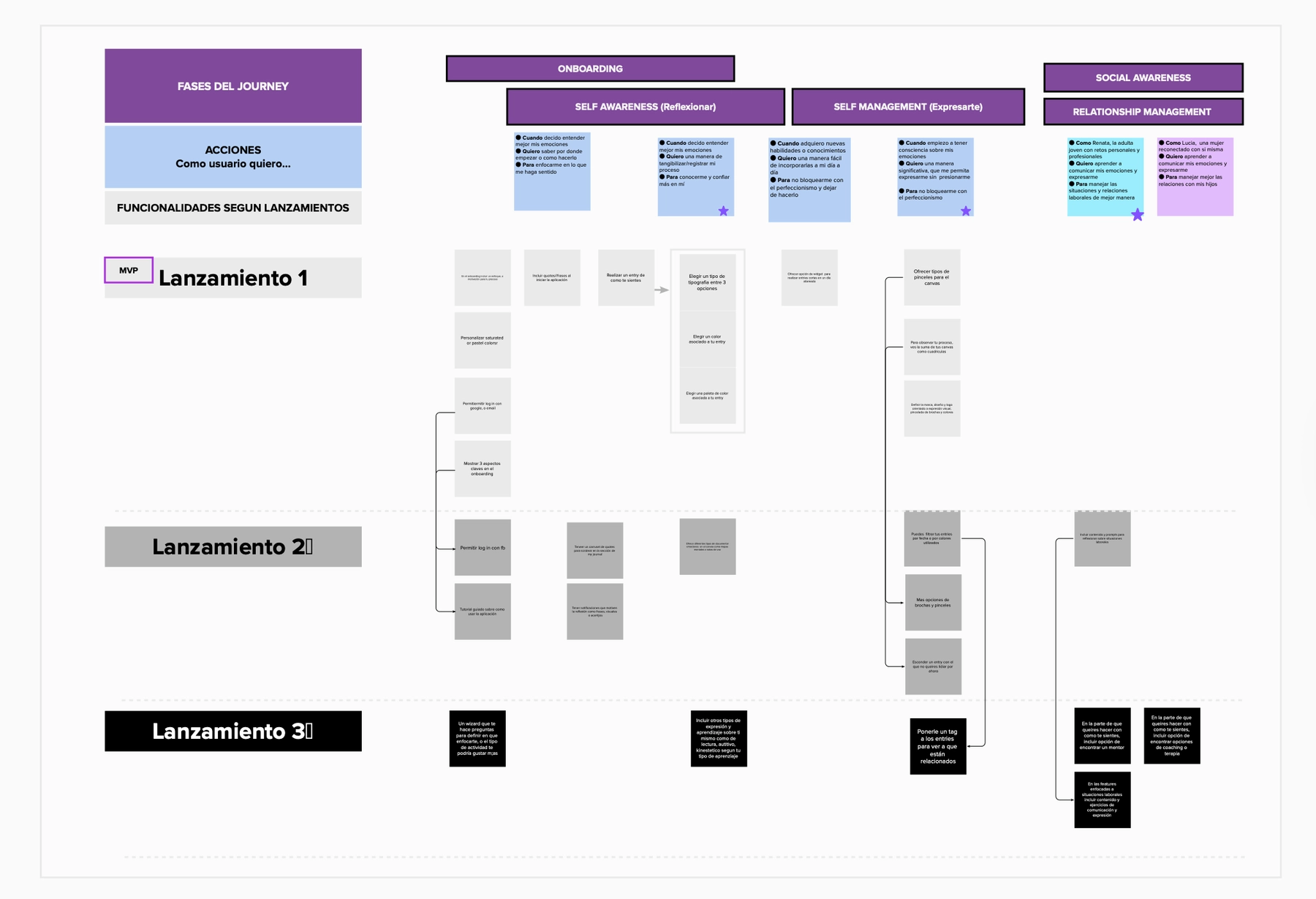
LEARNINGS
- Carrying out a Minimum Viable Research plan is key when the time and resources available are even more limited.
- The product roadmap is a “living” tool that prioritizes the features according to parts of emotional design, usability and accessibility.
- Small emotional nudges (a prompt, a word bank, a reflection bubble, painting) can spark deeper self-awareness.
- My mentoring experience in women’s self-knowledge programs taught me that the overwhelming emotional disconnection is often what causes students to disengage.
SKILLS
Product design, user-centered design, wireframing and prototyping, product conceptualization, backlog definition and prioritization, design for emotional impact, problem framing and ideation, information architecture and feature prioritization.
PROBLEM
Emotional support feels complex.
Many people struggle to understand, identify, and express their emotion, and often lack accessible tools to support them. This can lead to stress, disengagement, and burnout. Too much information can overwhelm rather than support emotional growth. I saw this clearly while mentoring 15+ women in an emotional intelligence program. That experience shaped my belief that emotional growth needs small actions not complexity.
MY ROLE: Product Designer - (150-hour Product Design Specialization)
- Explored how digital products can support emotional intelligence—helping users better understand, manage, and express their emotions and executed design decisions.
- Led the end-to-end product conceptualization, UX research, and design—from defining the problem to wireframing and prioritizing a functional backlog.
GOALS
- Design a mobile concept to support emotional awareness and expression.
- Develop wireframes and flows based on emotional design principles.
- Define and prioritize a product backlog tied to usability and emotional value.
OUTCOME
- Best Project Award in a class of +10 people from around the world 🥇 Case study in Spanish published by TorresBurriel with a Best Project Award

- Conceptualization of the digital product "Emotional"

- Product Backlog

PROCESS
- RESEARCH
- DESIGN
- EXECUTION
1. RESEARCH:
- Defined hypothesis, user needs and pains through 3 expert interviews, digital ethnography and observation creating 2 proto-personas.



💡 Who? What is the need?
Renata: Young working adult.
Lucia: Mother reconnecting and prioritizing herself.
- Investigated the market to craft a benchmark around mobile apps that relate to emotional intelligence. The most important part was to figure the pillars of emotional intelligence it hits and the core value proposition.
| Emotional Intelligence | Paradym | Moodflow | ThinkYou | Reflectly | Headspace | |
|---|---|---|---|---|---|---|
| Description | Lead, manage and control emotions | Emotional health + wellbeing | Mood & Symptom tracker with journal | Happy guide, gratitude and goals | Journaling app, mood tracker | Mindfulness and meditation app |
| Concept related to emotional intelligence | 4 pillars of EI. Theory | 4 pillars of EI. Theory, reflecting and community | Self awareness pillar: Emotion tracking | Self awareness pillar: Reflect | Self awareness pillar: Reflect | 4 pillars of EI. Theory. Mindfulness with emphasis on self-management |
| Price | Free trial. Anual $47.99 | Free trial. Anual $55.99 | Free trial. 6 monts $13.49 | Free trial. Anual $23.99 | Free trial. Anual $59.99 | Some free. Anual $94.99 |
| Has a log in | Yes | Yes | No | No | Yes | Yes |
| Onboarding Steps | 5 | 5 | 6 | 5 | 8 | 8 |
| Core value prop | Sense of control with theory | Sense of guidance and direction | Visualizing progress and sense of ticking of what's done | Acknowledging, and knowing oneself bette rby documenting it | Visualizing progress | Sense of peace and cheering |
- Key findings
- There’s plenty of mobile apps focused on actions that can help the pillars of emotional intelligence.
- Most focus on self awareness on tracking and reflecting. What about other ways of expression?
- The gap is in making them a habit or enough to not get overwhelmed in perfectionism because they include progress features.
- Funny enough, perfectionism and drowning in theory is what blocks people to continue.
2. DESIGN
- Applied ideation techniques and evaluate them in a value/effort matrix.

- Created task flows and consolidated the user journey abse don the two proto-personas

💡 What is the focus?
First time user. Onboarding flow and learning about the first steps of self awareness.
Heavy user. Journal entries as a habit. Can look back at other entries.
- Drafted initial information architecture for a profile, a history, and a journal with multiple expression mechanisms.

- Sketched with pen and paper low-fidelity wireframes.
- Developed mid-fidelity wireframes with structured journaling prompts, visual feedback and the painting expression section.

💡 What’s the concept?
A mobile app that walks you to the emotional intelligence journey one step at a time. No pressure, no productivity, just expression.
It allows the user to make journal entries with different ways of expression like painting, associations with color palettes or writing.
It supports multiple art tools and ways of approaching art.
The journey keeps the entries not from a tracking standpoint but rather for observing the emotions and going back to situations that the person is learning how to handle.
3. EXECUTION
Backlog and roadmap
- Proposed roadmap stages tied to concepts of emotional intelligence from basic ones (onseself) to more complex ones (relationship management)
- Created a prioritized feature backlog with 3 launches: journey entries, emotion library, and ways of expressing oneself.
- Categorized items by reflecting on their emotional design value and feasibility.

LEARNINGS
- Carrying out a Minimum Viable Research plan is key when the time and resources available are even more limited.
- The product roadmap is a “living” tool that prioritizes the features according to parts of emotional design, usability and accessibility.
- Small emotional nudges (a prompt, a word bank, a reflection bubble, painting) can spark deeper self-awareness.
- My mentoring experience in women’s self-knowledge programs taught me that the overwhelming emotional disconnection is often what causes students to disengage.
SKILLS
Product design, user-centered design, wireframing and prototyping, product conceptualization, backlog definition and prioritization, design for emotional impact, problem framing and ideation, information architecture and feature prioritization.

